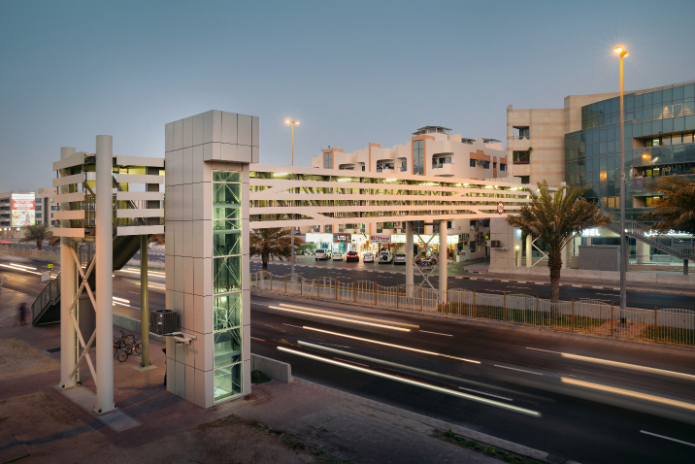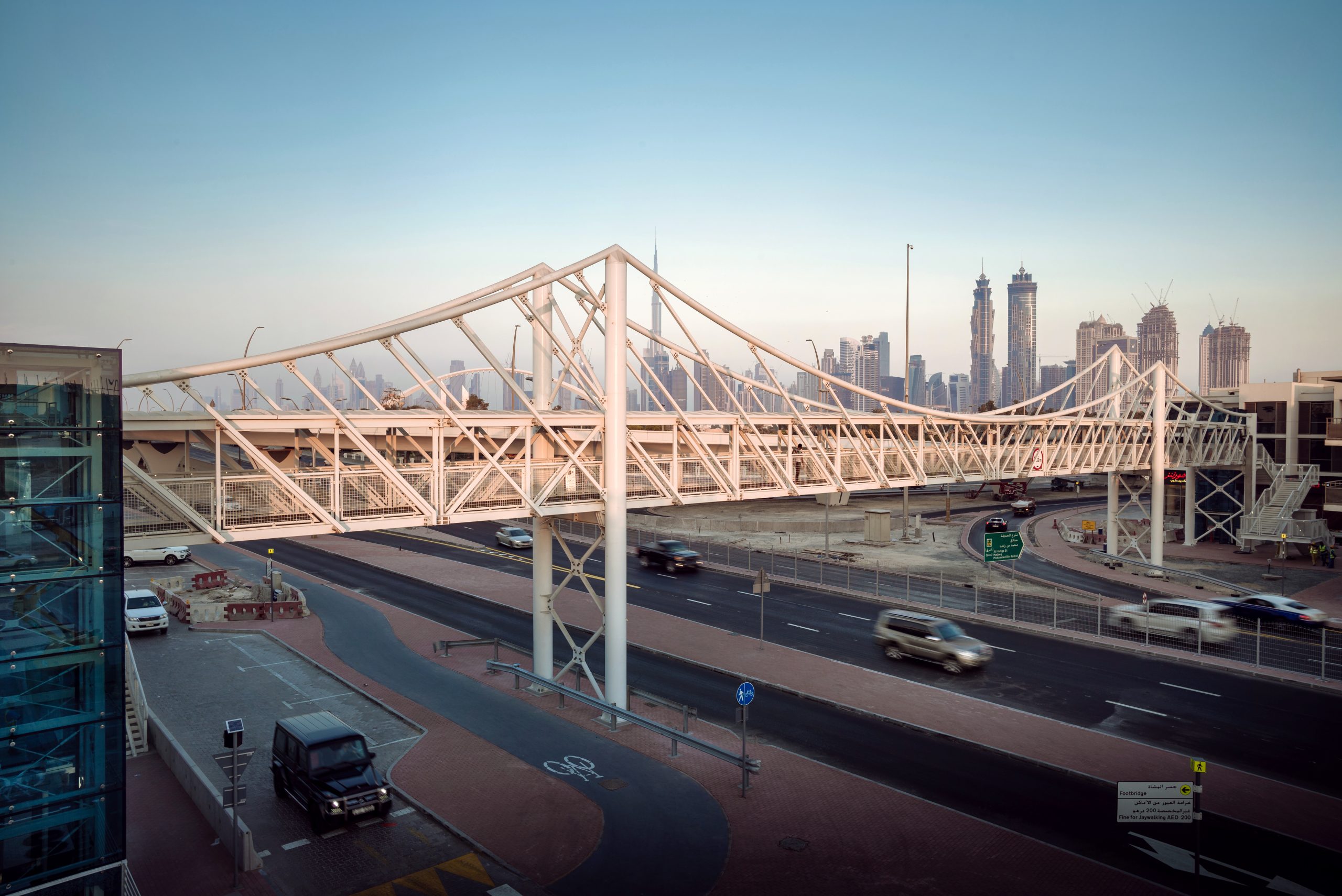Dubai’s rapid urbanization has given rise to a growing need for efficient and sustainable transportation solutions. Steel pedestrian bridges have emerged as a key component in enhancing connectivity and mobility while adding to the city’s architectural splendor. Advancements in steel pedestrian bridge design and construction have played a pivotal role in meeting these demands, revolutionizing the way bridges are conceptualized, designed, and built.

Gone are the days of plain and functional pedestrian bridges. Modern steel pedestrian bridges are architectural marvels that seamlessly blend aesthetics with functionality. Steel’s versatility allows engineers and architects to explore bold and innovative designs, creating iconic structures that serve as urban landmarks. From elegant suspension bridges to graceful arched spans, steel’s flexibility enables engineers to push the boundaries of bridge design.
Steel’s inherent lightweight properties make it an ideal choice for constructing pedestrian bridges. Unlike traditional materials such as concrete, steel bridges require less substantial support structures, minimizing their impact on the environment. Additionally, steel is highly recyclable, aligning with Dubai’s commitment to sustainability and reducing the carbon footprint of bridge construction.
Advancements in steel fabrication techniques have led to increased adoption of prefabrication in pedestrian bridge construction. Prefabricated steel components can be manufactured off-site, streamlining the assembly process and reducing on-site construction time. This efficiency not only minimizes disruptions to the surrounding area but also lowers construction costs, making steel pedestrian bridges a cost-effective choice for Dubai’s ambitious urban projects.

Safety is a paramount consideration in pedestrian bridge design. Steel’s high strength-to-weight ratio ensures that these bridges can withstand heavy loads while maintaining their structural integrity. Additionally, steel’s ability to flex and absorb energy enhances the bridge’s resilience during natural events such as earthquakes, ensuring the safety of pedestrians.Steel pedestrian bridges go beyond their primary function of connecting two points; they often serve as multi-functional spaces that enhance the urban experience. Integrating features such as bicycle lanes, seating areas, public art installations, and green spaces transforms these bridges into vibrant community spaces that cater to various activities and events.
Dubai’s commitment to becoming a smart city extends to bridge design. Steel pedestrian bridges can be equipped with smart sensors and integrated into urban networks, providing valuable data on foot traffic patterns, structural health, and environmental conditions. This data-driven approach enables efficient bridge management, optimizing maintenance efforts and ensuring the longevity of the structure. Inclusive design is a fundamental aspect of modern bridge engineering. Steel pedestrian bridges can be designed with accessibility in mind, ensuring that everyone, including people with disabilities, can navigate the crossing safely and comfortably. Features such as ramps, elevators, and tactile indicators make these bridges accessible to all members of the community.
Efficient engineering in steel pedestrian bridge design and construction is shaping Dubai’s urban landscape, promoting connectivity, and adding to the city’s architectural allure. With innovative designs, sustainability features, and cutting-edge technology, steel pedestrian bridges stand as testaments to Dubai’s commitment to modernity and progress. As the city continues to grow, these advancements in steel bridge engineering will play a crucial role in providing efficient and safe transportation solutions for its residents and visitors alike